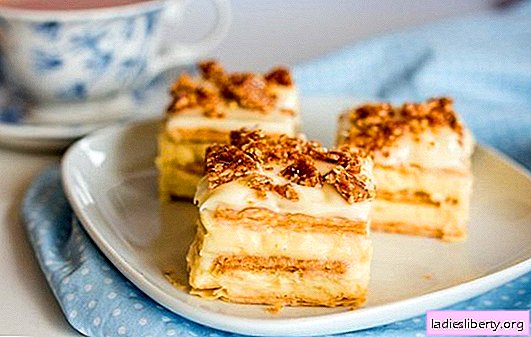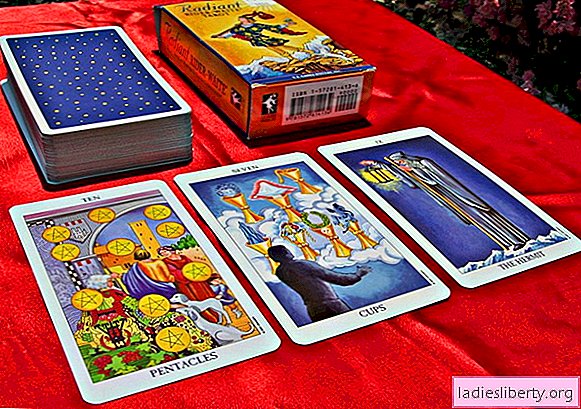
The love of Eastern style in these past decades is obvious.
Fashion, interior, arts and crafts are full of Arab, Turkish and Moroccan motifs.
The last of them becomes more desirable and in demand.
And this is no accident, since it is the Moroccan style that is distinguished by its unique exotic, comfort, intimacy and wealth.
Moroccan style
Morocco is one of the most mysterious countries in the Arab world. Located in northwestern Africa, it is not at all African.
Its culture is a fusion of Muslim traditions and European innovations. It is this feature that determined the characteristics of such a popular Moroccan style today.
Moroccan style above all - ethnic. It reflects the worldview and lifestyle of its locals.
The house of the Moroccan is oasis. This is a place of rest, solitude, prayer, communication with the closest people.
You can return here after tedious work or long exhausting wanderings. Therefore, everything in the house is as comfortable as possible and pleases the eye.
For a Moroccan, 100% comfort, beauty and at the same time functionality of every detail are indispensable.

Since Morocco is country of hospitalityShe carefully keeps all historical and foreign influences. First of all, the Moorish influenced its culture.
Spanish Arabs they brought architectural luxury to the Moroccan style: arches, columns, wall mosaic.
Berbers - the indigenous population, living mainly in the mountains, also made a significant contribution to the everyday design.
Simple in relation to the life and design of the home people gave the style more rough, even "wild" features.
Bold color combinations are a bright sign of that.
Shades such as brown, red, orange, pink and plum are included in the basic style palette. Also, Berber motifs include geometric shapes, stained glass, leather, wood, ceramic accessories.

Moroccan style can be embodied in its pure form, completely recreating the traditional design. And can use only its characteristic details, thereby placing bright accents. For example, long sofas with pillows, Moroccan tiles "Zelaid", arched niches.
Moroccan style in interior design
Eastern culture used to hide all the most valuable from prying eyes. Not an exception to this Moroccan.
Therefore, the main feature of the style will be the creation of an intimate, mysterious atmosphere. What makes this happen?
1. Windows with a view of the nature / courtyard
Not only the love of nature determines this criterion.
The outsider's eye should not see what is happening inside. Therefore, the windows should not go out on a noisy street or other crowded place. This isolation creates complete comfort, prevents the penetration of noise.

2. Heavy drapes
Even if the first criterion could not be met, the use of the second one will cover it with interest.
Curtains - one of the main decorations of the room. Dense opaque fabrics serve to protect against the scorching sun, creating indoors twilight and coolness.
Usually their color range varies within saturated colors: brown, red, ocher. But other shades are possible.

3. Carpets
It can be both traditional Berber carpets and Arab. The first option is more suitable for utility rooms (corridor), the latter is intended for the living room and bedroom.

Kingdom of rest and enjoyment - so you can briefly describe any room in the Moroccan style, whether it is a bedroom, veranda, kitchen or bathroom.
What are the most significant components of this style in interior design?
1. Large sofa
The more sofas, the better. In a traditional room, sofas covered with cushions are located around the perimeter of the room.
They form the basis of the design of any room.
It is also complemented by a low table and low leather puffs. If guests descend, there will be no problems with their accommodation.
Even if they stay overnight.

2. Moroccan tiles
It is also a business card of the Moroccan style.
Clay tiles are created using a special technology that was given to Moroccans by Arabs from Spain. Like the mosaic tile itself, its distinctive geometric pattern is unique and inimitable. Most often these are squares, rectangles, rhombuses, six-pointed stars, octagons.
"Weaving" of these figures is carried out with clear mathematical proportions.
The tile is suitable for finishing any surfaces - walls, arches, floors, columns, niches and decorative projections.

3. Arches
The arches came in Moroccan style. from Spain.
They can be used as a form of windows, doors, transitions to another room.
Most often they fit into the interior as arched niches — simply decorative or shelving.

Moroccan style is full of decor. Most often, each thing performs some useful function. At the same time she is amazing graceful and beautiful.
The unique exotic taste of Morocco is given by the following decor items:
1. Aluminum and copper products: Moroccan lantern, vases, paintings, weapons, figurines, handwashing bowl, candlesticks, lamps.
2. Ceramics: plates, jugs, other dishes, small sculptures. Moroccan ceramics also has its own unique ethnic patterns. It can not be confused with any other.
3. Colored glass products: mirrors, windows, chandeliers.
Moroccan style in the exterior design of the house
Moroccans do not attach much importance to the exterior of the house.
Traditional houses are riads - rooms with windows facing the inner courtyard. Here, sophistication and beauty is not inferior to the interior.
The courtyard is a paradise garden.
Fountains, fruit trees, elegant benches and even sofas with cushions - everything is arranged so that there is no desire to go outside the courtyard.

The architecture of the courtyard may be present Moorish arches, often in the form of a horseshoe or oval-elongated.
A special effect is created by rows of arches that frame the courtyard, replacing the external walls. The center of this place is usually a fountain. On particularly hot days, it gives coolness and fills the space with the sounds of nature.
Walls and arches can be finished using Moroccan tiles. Tea table is also indispensable. The color palette is different from the interior.
She is more calm and natural. Orange, blue, green tones can be accented with pink, red, yellow spots.
A large place is given to plants and flowers. Cacti are the most popular and unpretentious among them.
Special charm creates greens planted in large clay vessels. Also along the tracks or the sidewalk it will be appropriate to place the Moroccan copper lamps.
In the evening and at night, they will illuminate the path, as well as create a fabulous atmosphere.
Moroccan Style Furniture
Moroccan furniture, like Morocco itself, is exotic and unique. In the choice of material masters prefer wood.
These are mainly thuja, beech, argan, cedar. This is due to its characteristic dark brown color. Preference is given to a tree not by chance. It is the most natural element suitable for the human body.

Oriental ornament, elegant and rich, distinguishes this furniture from any other. Carving is not the only decor.
Mosaic, artistic forging, hand-drawn pattern equally create originality of these products. As a rule, chairs, armchairs and even tables are quite low.
The main furniture of the Moroccan style is a sofa. As a rule, it is also lower than usual, long, with an infinite number of bright pillows.
The color of the upholstery is chosen bright or pastel, but with a flowery ornament. Chic style emphasized satin or silk bedspreads. The table occupies an equally important place in the house, as the ceremony of eating in Morocco is one of the main ones.
Tables are also low, as food intake occurs sitting on pillows or low chairs. A set of furniture complement the dressers, stools, poufs, screens.
Moroccan ornament in interior design
Each traditional culture has its own unique ornament.
This is a peculiar way to comprehend and organize the world.
The ornament has both aesthetic function - to decorate and sacral - to protect the house from the evil eye.

Moroccan mosaic perfectly reflects these ideas.
The humid, hot climate does not allow the finishing of wallpaper.
After all, they very quickly skukozhatsya. They are replaced by clay tiles "Zealid", lined with mosaics.
The tile is prepared according to the ancient technology, originating from the Middle Ages. It is not excluded the influence of the Roman Empire.
After all, the Romans were famous for mosaic art. The ornament is a complex geometric pattern.
His philosophy is this: everything in this world is harmonious, orderly and has its specific place.
Such images are important for human relaxation. The eyes, constantly observing the perfect rhythmically built pattern, receive tranquility and aesthetic pleasure, as from a work of art. In fact, this mosaic is a real masterpiece.

The traditional method of its creation involves the exact selection of each small cube to another.
Symmetry and mathematical alignment are the main criteria for creating tiles. Geometric, floral, floral ornament represents the complexity and at the same time the beauty of the world.
Strictly regulated in this craft involves certain colors: green, white, blue, brown, red. In addition to originality, this tile has such advantages as water resistance and durability.
Another undeniable advantage is its versatility. It is used for cladding balconies, fireplaces, stairs, bathrooms, fountains, living rooms, kitchens and bathrooms. You can meet such tiles even in bedrooms.
It can be on the walls, on the ceilings, on the floor, and even on the furniture.

Moroccan style in the interior is becoming increasingly popular in Russia.
This desire is associated with the search for new original solutions for the design of your home. The main task of the Moroccan style is to create a charming atmosphere of the East. If all principles are correctly implemented, then the idea that this place is the best on earth will not leave its inhabitants.
You also need to take into account the rule of the golden mean, and try not to overdo it.
After all, the basic mood of the Moroccan interior is languor, slowness, sensuality. Therefore, one should competently select parts for rooms where the energy of activity prevails (classrooms, halls, children).











